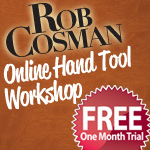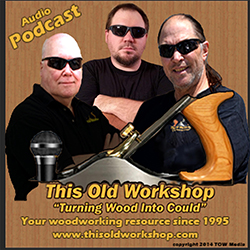Naniwa Chosera Stones

The Naniwa Chosera Stones could be the best method for hand sharpening tools found to date. We Tested the Naniwa Chosera stones for the past 5 months and they have performed flawlessly. When we were asked to test these stones, we had just spent several months using all the top machines in the business. This is how the story goes:
Over the past year we have focused on several methods of sharpening your tools. We have covered fine machines like the Tormek T-7, The Worksharp 3000, the Grizzly T100-10, and the Jet JSSG10. While all of these machines do a great job there was a clear winner in the crowd, and this left us wondering if the best way to sharpen tools was with the Tormek T-7? Or was there a better way to get your tools sharp?
Then I went out and purchased a couple of the well heralded Shapton Japanese water stones. My first impression was that they dished very quickly and they were very soft as well as very thin. I was testing these because my friend Rob Cosman says they are the best. After testing the Naniwa Chosera stones, I have say to Rob and to the world I have found a much better stone and I am going to tell you all about them.
First the term Ceramic stone is a commercial term that has very little to do with the way the stones are made. Both the Shapton and the Naniwa are made using a similar technique. When I began testing the Chosera stones the first thing I noticed was I didn’t have to buy a stand. It came with a stand affixed to the bottom of the stone. The second thing I noticed was they were almost 3 times as thick as the new Shapton stones I had just purchased. Then the testing began. I was given several stones to test: 400 grit, 1000 grit, 6000 and 10000, as well as a 12000 grit Super Stone. When you compare the Shaptons you should compare them to the Super Stone as both the Super Stones and the Shaptons are softer than the Chosera stones. This makes the Super Stone and the Shapton much more prone to dishing than the Chosera stones. The reason this matters is you must keep these stones flat to get the best edge on your tools. I was able to sharpen a variety of tools. Some I considered sharp already and some were in need of a quick touch up.
Remember, I have been testing all the machines so dull tools were a premium in the shop and they didn’t stay dull for long. I used several techniques to sharpen with the Chosera stones. I used Rob Cosmans technique with the David Charlesworth “ruler trick”. I also used the Veritas honing guide and found that it worked very well and would be ideal for the beginner. Finally, I used Don Peschke's method which some people will like. I found it was easy to do but you need to be careful to use all of the stone. I am very happy using Rob’s method.
If you have never seen it click on robs banner and join this site you will get one free month if you join from the link on this page.
All about the Chosera stone. It is very hard compared to the other stones we have tested and I found they dished very little. This is very good news for the stone because it takes little effort to flatten the stones, either with the stone grading stone that came with the set or with a Diamond plate stone like the one we reviewed from Trend a few months back. The Chosera stones put an edge on a tool very quickly. It ground the A2 steel like butter and it was even faster on A1 steel. I did not have any PMV11 tools available to test, but I will assume it will perform even better than on the A2 steel. I have changed my sharpening method because of these stones, and I am very pleased with their longevity as they simply don’t dish as quickly as other stones. Because they are easier to keep flat, they yield a superior edge on hand tools than other stones.
The results were great. I am able to take a dull tool, say a plane blade, and once it has a good bevel on it I can go from 1000 to 6000 to 10000 and be done in less than 3 minutes using the Cosman method and the Charlesworth ruler trick. The stones have been in daily use for 5 months and they have shown very little wear. I am pleased to recommend these stones to you, the readers and hope that once you try them you will agree.



















